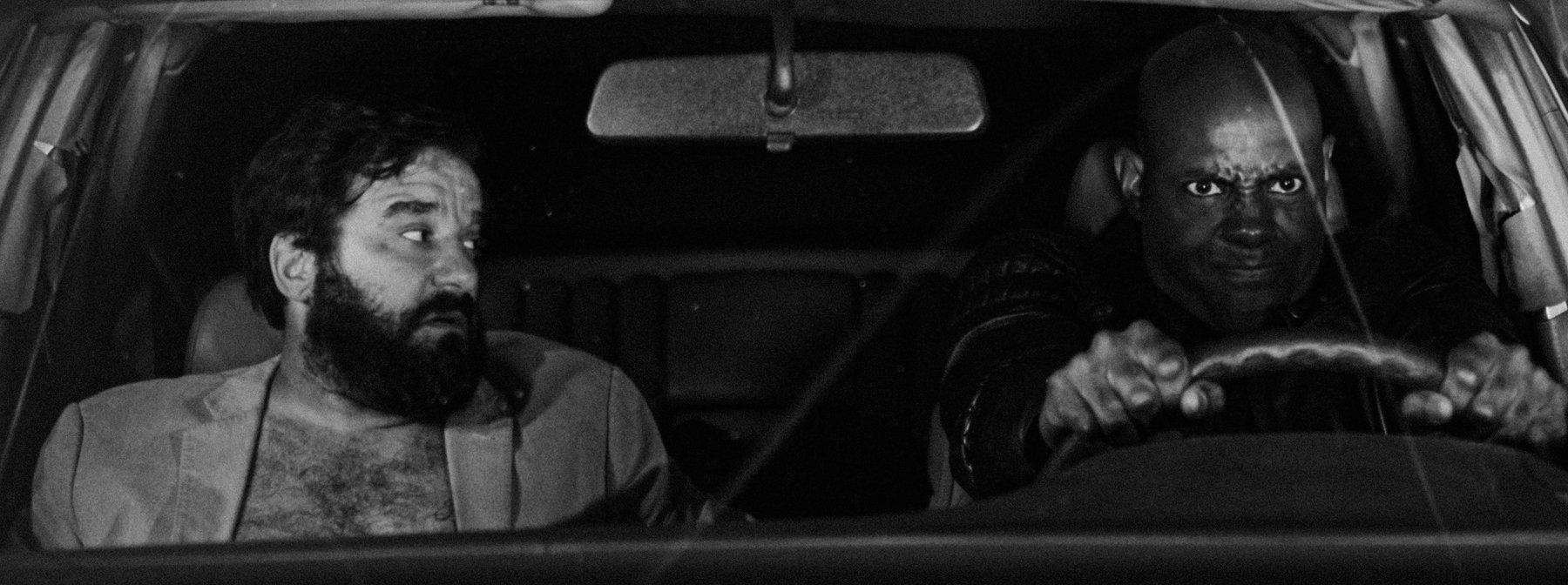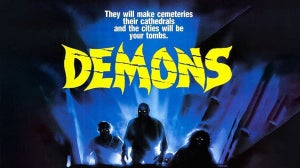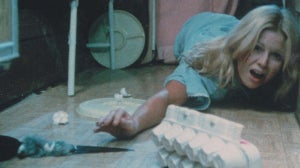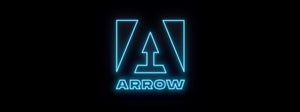
“Black and white is much closer to the condition of dreaming. It links you to the subconscious and I think that was part of the great appeal of movies originally… this strange otherness.” — John Boorman
No colour here…. but don’t let that put you off. As far as absurdist-paranoid-slacker-sci-fi-movies go, British director David Buchanan’s feature debut, Laguna Avenue (2021) is streets ahead... by a monochrome mile. Witness the lo-tech body hacking that (wait for it) includes a cybernetic dildo hand (fight) that sticks a finger up to — or at least ‘pokes’ fun at — the concept of man as machine in an age of trans and transhumanism…
Still with us? Good. There’s more to unpick, if only for the Lynchian title alone — those lost highways and ‘Mulholland mindscapes’ — as well as the hints of a lo-tech rendition of William Gibson’s Sprawl; circuit boards aping the neo-noir L.A. cityscape like a low-rent Michael Mann. Despite all this circuitry, Buchanan modestly sums it up in a nutshell as “an insane, unruly, teenager of a movie found on a trash heap.” And few would disagree. High or low art, take a moment to drive by. From influential avant-garde filmmaking and the Kafkaesque to revelling in bad taste; the following chronological road map is inspired by the black-and-white indie movies that share some unique strands of Laguna DNA… whether intentional or not.
8½ (1963)
A benchmark of cinema, Fellini’s Oscar-winning surrealist comedy-drama is one of the greatest examples of a film about filmmaking. Thematically, Buchanan’s take on ‘a man lost’ highlights just one of many parallels that shows how strong an influence there is here. Of course, our Laguna lead is hardly running at full potential — let alone struggling to deliver a profound work of art — but is (simultaneously) having to deal with personal relationships while struggling to find true happiness within his fragmented life. Both 8½ and this L.A. lowbrow affair are, at their core, about the alienating effects of modernisation. In quoting the film itself there seems a “poetic inspiration” when looking at their similarities; from the hidden (and surprising) elements of science fiction to the way the characters are introduced (in cars) before the neurosis takes hold… whether a dream or reality. Most obvious is the typically throwaway reference in Laguna Avenue when a bedside memo is left as a reminder: “Don’t forget to walk Fellini.”
https://www.youtube.com/watch?v=RmIC9pQ80Fk
Multiple Maniacs (1970)
John Waters once said: “Technique is nothing more than failed style.” And he has a point. As an underground filmmaker, he was originally influenced by previously depraved cinema by way of Herschell Gordon Lewis’ splatter movies of the ’60s; namely Two Thousand Maniacs! (1964). His slice of jet-black comedy is quite the ‘experience’ as a band of psychos pose as a travelling freak show and then rob and murder their bewildered audience. His second feature after Mondo Trasho (1969), Waters’ Grand Guignol features his Dreamlanders acting troupe; including cult stars Divine (aka the late Harris Glenn Milstead) and Edith Massey. The ‘Puke Eater’ pre-empts shit-eating here… followed by other servings of madness that includes a giant lobster rape scene. Yep. That’s a giant. Lobster. Rape scene. Yet, despite his infamous lowbrow mentality, it’s no secret that Waters still appreciates highbrow cinema. Via his Criterion Closet Pick in 2019 he reminisced “we used to take LSD and see his movies all the time.” In essence: Multiple Maniacs! is a ‘fucked up Fellini’, Waters going on to highlight Saraghina’s sequence in 8½, reminding us all (and himself) of a less maniacal Massey/Divine hybrid.
https://www.youtube.com/watch?v=g5G2CSTiwtU
Eraserhead (1977)
On the surface, David Lynch’s claustrophobic masterpiece defies any real logic, which is part of its strange appeal. By no means conventional storytelling — a factory worker finds out he’s the father of a mutant baby — Lynch’s artistry relies on the unconscious; hence its surreal and disturbing imagery. Preserved in the National Film Registry by the United States Library of Congress as “culturally, historically, or aesthetically significant”, any cinephile or filmmaker understands the film’s importance even if they don’t fully understand it. What we do know though is that Lynch’s fear of fatherhood is an obvious detail that opens up some further meaning. Not only does this include the responsibility of looking after a newborn; their dependence and fragility — as the poor child literally falls apart before our eyes — but also hints at the suffocation of relationships and alienation. This is Lynch’s ‘Die Verwandlung’… his ‘Metamorphosis’.
https://www.youtube.com/watch?v=7WAzFWu2tVw
Stranger Than Paradise (1984)
No ‘stranger’ to black-and-white imagery, Jim Jarmusch’s distinctive approach is what defines auteur filmmaking. You know his work right away as he latches onto out-of-place characters inhabiting the mundane. It’s relatable, yet still feels oddly remote and distant as we witness encounters; specifically the exchanges and interactions between people in empty spaces. Based on his 1983 short film, Stranger Than Paradise follows a couple of New York layabouts who survive on TV dinners, beer and their two-bit hustling. A king of the static camera, Jarmusch often leaves in what most directors would leave out. This is emphasised all the more by his lack of movement and limited cuts that force the viewer to sit in on daily routines, therefore avoiding what should be considered filmmaking. The result is what could be considered somewhat ‘stagnant’ or ‘vacant’ but has helped define and characterised Jarmusch’s films through a distinct sense of space and emptiness; a style and technique that has even deconstructed something as epic as the Western in his 1995 ensemble Dead Man.
https://www.youtube.com/watch?v=UxHMREKn9fs
Tetsuo: The Iron Man (1989)
Despite Laguna Avenue being referred to as “Tetsuo meets John Waters” Buchanan has only seen a few of the latter director’s distasteful delights and has never seen this Japanese Iron Man. Although it appears to be the ultimate Cronenberg/Lynch mashup, Shinya Tsukamoto’s cyberpunk ‘marvel’ (or oddity) remains a perfect slice of body horror in its own right. The plot is almost non-existent as the film relishes in its experimentation film, flesh and metal. With the relationship between Laguna and Tetsuo purely coincidental, it certainly doesn’t detract from the inherent man/machine influences. Tsukamoto’s slice of sci-fi remains a fascinating hybrid of East and West mentality, merging the technically obsessed themes we would expect from Japan with more experimental art house films of the era. This includes visceral moments of stop motion animation that lend the film a more Kafkaesque European texture similar to the works of Czech animator and filmmaker Jan Švankmajer. We can make all the references we like; Buchanan takes nothing seriously with his prosthetic-enhanced deadbeat lead, and his (humble) sense of humour says it all: “It’s just a lot of weird stupid shit happening for 80 minutes.”
https://www.youtube.com/watch?v=ShJvheZHXdI
Man Bites Dog (1992)
A major part in the history of ‘New French Extremity’ this Belgian mockumentary is the bastard child of Rob Reiner’s This is Spinal Tap (1984) and John McNaughton’s Henry: Portrait of a Serial Killer (1986). Written, produced and directed by trio Benoît Poelvoorde, Rémy Belvaux, and André Bonzel, the film is not only the blackest of comedies but also an effective slice of crime. As the documentary crew continue to follow serial killer Ben we not only begin to learn his tricks of the trade but very quickly realise how much more complicit and drawn into his violent crimes they have become. An unforgettable experience to say the least, but I’d start with La Haine (1995) instead, which is a walk in a Parisian park by comparison.
https://www.youtube.com/watch?v=FjPFmIX-o_c
Clerks (1994)
Although Laguna Avenue writer Paul Papadeas isn’t Kevin Smith — nor was he trying to be; the original version was a more serious take — the character’s slacker mentality alone is an obvious comparison. Smith has always proved to be a true raconteur when it comes to conversation on and off the screen. His films may be light on plot (if any at all) but more than makes up for it with the interaction between relatable personalities and, on occasion, a heartfelt message. Clerks not only introduced us to the iconic Jay and Silent Bob but also his own ‘View Askewniverse’ that has woven his cast of characters into meta-like tales involving comic books, an animated series and crossovers within his films. Again, nothing is taken too seriously. Smith may not have the sophistication but oozes charm and is a prime example of retaining an independent spirit and personality.
https://www.youtube.com/watch?v=Mlfn5n-E2WE
Pi (1998)
Released the same year as Christopher Nolan’s neo-noir debut Following, Darren Aronofsky’s first feature is another surreal deep dive into familiar monochromatic territory. Playing out as a psychological thriller, a paranoid and obsessive mathematician, Maximillian “Max” Cohen, searches for a key number that may unlock the answers to what he sees as an order to the world. As Max wrestles with the imperfect irrationality of humanity and the logic of mathematics, Aronofsky manages to explore themes of religion, mysticism and the meaning of the universe through number theory and divine formulas. Filmed on high-contrast black-and-white reversal film, Pi also took ownership of the use of the SnorriCam (or bodycam) where the camera is rigged to the actor creating a sense of delirium, which is often attributed to Aronofsky’s work. The technique however can be seen in earlier films such as John Frankenheimer’s Seconds (1966) — utilising a SnorriCam prototype — and, perhaps most famously, in Martin Scorsese’s Mean Streets (1973) where Harvey Keitel’s lead character Jimmy Shorts wanders drunkenly through a crowded bar.
https://www.youtube.com/watch?v=r0SC582sJvE
Bait (2019)
Writer/director Mark Jenkin’s British drama Bait (2019) is a film that reverts to much older and painstaking film production methods. This involved Jenkins using a vintage hand-cranked Bolex camera with 16mm monochrome film which he then hand-processed himself. The film’s ADR and Foley add another heightened layer; a texture of sound not heard by modern audiences for years and delivers a rare cinematic experience that shows the quality of film as a medium. Robert Eggers’ The Lighthouse — a perfect companion piece released the same year — is another film that feels like a lost artefact. Less concerned about keeping its sea legs planted in reality it hints at the Lovecraftian lore and mythology we would associate with an American production. Delving into lucid and surreal moments Eggers taps into something more psychological, the stark black-and-white imagery feeding the subconscious… creating the strange ‘otherness’ Boorman alludes to.
https://www.youtube.com/watch?v=ZmydSyiR59o
A Ghost Waits (2020)
Whereas Fellini’s 8½ is thematically linked, Laguna and Ghost make for a perfect double feature; two (small) cuts of 21st-century cinema that deliver equal amounts of charm on a super low budget. In Adam Stovall’s film, there are echoes of Noah Baumbach’s idiosyncrasies by way of Frances Ha (2012). Again, quirky and contrary characters seem to drift in and out of scenes (and the narrative) in much the same way Ana Lily Amirpour’s skateboarding Iranian vampire does in A Girl Walks Home Alone at Night (2014). As with the majority of these indie examples comes the reliance on character. In the case of A Ghost Waits the film is a touching black-and-white exploration of loneliness and love that, in turn, reminds you of the importance of life after death… while still managing to put a smile on your face
https://www.youtube.com/watch?v=eH3LGnUjMag&t=29s
Watch Laguna Ave on ARROW
https://www.youtube.com/watch?v=Qixdq2tsrJE

Related Articles








